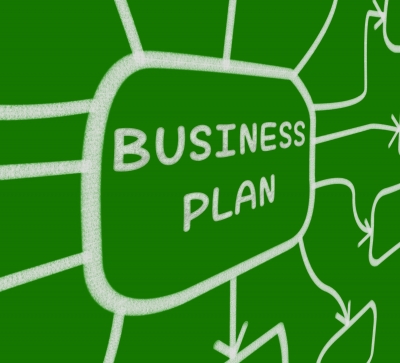
You’re beyond the plan-on-a-napkin stage. It’s time to create your first business plan, or take one you already have in play to the next level. So, what now? How will you advance your planning approach so you can dig deeper into the business and get better results?
As your business changes, so does the need to expand your business plan. Ultimately, the plan should be a blueprint of how your company will grow and prosper. Based on our experience, here are 10 components you should include in your business plan.
Landscape Business Plan Component #1. The Executive Summary

How would you describe your business, the value you provide and the services you offer in 10 minutes or less? Basically, you’re saying, “This is who we are. This is why we exist. This is what we want to accomplish.” The executive summary of your business plan should be: clear, objective, logical and demonstrate your knowledge of the business. The summary should also identify:
- Target markets
- Management skills and capabilities
- Financial requirements to achieve the plans
- Intended returns
Your To-Do List:
- Does the Executive Summary explain why the company was founded?
- Have you briefly discussed your management team?
- Are the Companies value propositions profiled?
- Is Ownership identified?
- Have you described the markets you are targeting?
- Have you identified the size of the total market and the dollar value or percentages you plan to capture?
- Have you included a current financial performance overview, future expectations of financial performance, and your financing needs?
- Is this section three pages or less?
Landscape Business Plan Component #2. The Company
Now, let’s focus in on the vision of your company—your ideas and objectives. You’ll want to break this Company summary into two sections. One should focus on the company profile, and the other should identify company objectives.
Company Profile:
- What does your business do, and what services do you offer?
- What is your mission statement?
- Describe the company’s background. What’s your story?
- What markets do you currently target, and which markets would you like to reach?
- If you’re a startup, what type of legal entity will your company be? (LLC? C-Corp? S-Corp?)
- What ownership structure is in place?
Company Objectives
- As owner, what are your short-, intermediate- and long-term goals?
- What are the key success drivers? (What will make or break your ability to reach these goals?)
- What strategies will you put in place to meet those goals? (Ex: You want to increase revenues by 10%, so how will you do this?)
- What is your value proposition? What makes you different? (Customer service, specialties)
- List important milestones and detail out the tasks required to accomplish those. Take it step by step and include timelines if possible.
Your To-Do List:
- Does this section describe what your business does and your vision for the company in the future?
- Have you clearly described what the company has accomplished in the past and plan to do in the future?
- Have you identified how the company plans to be successful, what you are offering, and how you will fill a need?
- Have you described the company’s past shortcomings and strengths?
- Have you told the story of how the company got started and why?
- If you have had articles written about the company, won awards etc., have they been mentioned?
- Did you identify the ownership structure and the owner(s)?
- Did you include the company mission statement?
- Is this section three pages or less?
Landscape Business Plan Component #3. Products and Services
What services does your landscape company offer, and what are the advantages of each service? Why should customers want to hire you do to their work? Consider this as you build the Products and Services section of your business plan, which should include three segments. One is focused on the customer value proposition, and then you’ll profile what makes your services different in a development section. Finally, you’ll roll into production processes and how you actually get the work done.
Customer Value Proposition
- Who is your target audience? Where do your ideal customers live—how do they spend their free time, what do they do for a living? Create a customer persona so you can accurately target your market.
- What do your customers really need in a landscape business? What would make their lives easier or better?
- How can your services address their pains?
- Identify competing services in your market and what makes your company different. How will you out-value them?
Development If you’re a landscape maintenance firm, what value do you bring to clients aside from making tall grass short. If you’re a lawn care operation, why will a customer choose your 7-step program rather than the other competitor’s offering across town? If you’re full service or offer design-build, what about your approach or expertise will attract customers to your business? Consider these questions as you build out the development segment of your business plan’s product and services component.
- Are you a franchise business? If so, profile that in this section.
- What innovative edge do you have over competitors?
- Identify any licensing rights.
- Note any certifications or special designations that differentiate your company.
Production
- How do you deliver the services you provide? Basically, how do you get your work done? Detail your current capacity and how you’ll expand to meet sales targets and financial projections.
- What is your production process?
- What volume of work do you currently product? What is your expected production capacity?
- How will you adjust capacity if needed?
- What production tools are required?
- What materials, parts and services do you purchase from outside vendors?
- What human resources requirements will you need to achieve production goals?
- What inventory will you keep on hand? (Identify inventory management solutions.)
Your To-Do List:
- Have you identified all your products and service offerings?
- Have you described who buys your products and services?
- If you offer more than one product or service, have you explained how they relate to one another?
- Have you explained why you are needed and/or unique in the market?
- Have you explained why your products will gain market acceptance?
- Have you described the competitive products and/or services that in the markets you will be competing in?
- Have you described how your products/services compete in the market and will gain market share?
- Have you explained in detail what makes your products and/or services unique?
- Have you shown how you will meet your operating challenges?
- Have you explained your quality control and customer service solutions?
- Have you explained how you will meet your human resource needs?
- Is this section four pages or less?
Landscape Business Plan Component #4. Industry and Market
You want to increase the value of your company—grow your operation—but this is only possible if the market allows. Or, if you expand into new markets where there is opportunity to increase your client base. So, what’s the plan? First, identify the market segments where you currently compete. Then, identify gaps in the market where your services are in demand. Can you justify your revenue goals? (That’s the idea.)
- Support market assumptions. You can tap into resources like local market studies, trade publications, industry directories, government agencies and chambers of commerce. Use social media to gauge the type of groups people in your area and what they buy.
- Think big-to-small when organizing an industry analysis. Profile the entire market potential first, then narrow the focus to market segments that most influence your plan.
- Identify competitors and obstacles to reaching your market.
- Break the analysis into two sections: Industry and Market.
Industry:
- How dynamic the industry is developing, how dynamic is the growth?
- What the total sales volumes and revenues are for the industry, and what are trends?
- What are pricing trends?
- What economic developments influence the industry?
- Does government affect the industry? If so, how?
- What are key factors driving your industry?
- Why are people buying your service?
- Who are your competitors?
- What are your barriers to entry? Think capital, human resource, regulatory concerns, etc.
- What are the typical returns realized by the industry?
Market:
- Why did you choose the market segments you are targeting?
- What is your typical customer?
- What is your rough 5-year projection of volume, revenue, and earnings? (We’ll dive deeper into this later in the plan.)
- What is your current volume in each segment?
- What growth rate do you expect—what’s your revenue potential?
- What market share do you currently own?
- What’s your market share goal?
- What profit level do you expect to achieve per market segment now and in the future?
- How you acquire and retain customers?
- What is the sales potential for each customer?
- Who are the typical decision-makers?
Your To-Do List:
- Have the identified how large the total market you serve is?
- If you offer your products and services in a specific geographic region, have you identified the size of that market(s)?
- Have you provided objective statistics to verify your assumptions?
- Have you provided industry growth projections?
- Have you provided growth projections, by market segment?
- Have you provided margin assumptions, by market segment and product/service offerings?
- Have you identified industry and market specific barriers to entry?
- Have you explained how competition influences your ability to reach customers or market segments?
- Have you examined pricing trends?
- Have you discussed customer retention/attrition?
- Have you described your customer service and service recovery strategies?
- Is this section 4 pages or less?
EDITOR’S NOTE: This story was an excerpt from one of NALP’s member resources, provided by well-known industry consultant Bruce Wilson. Want to learn more about bettering your business? Become a member to enjoy these resources and more.
Looking for more tips to improve your business? Attend LANDSCAPES!

